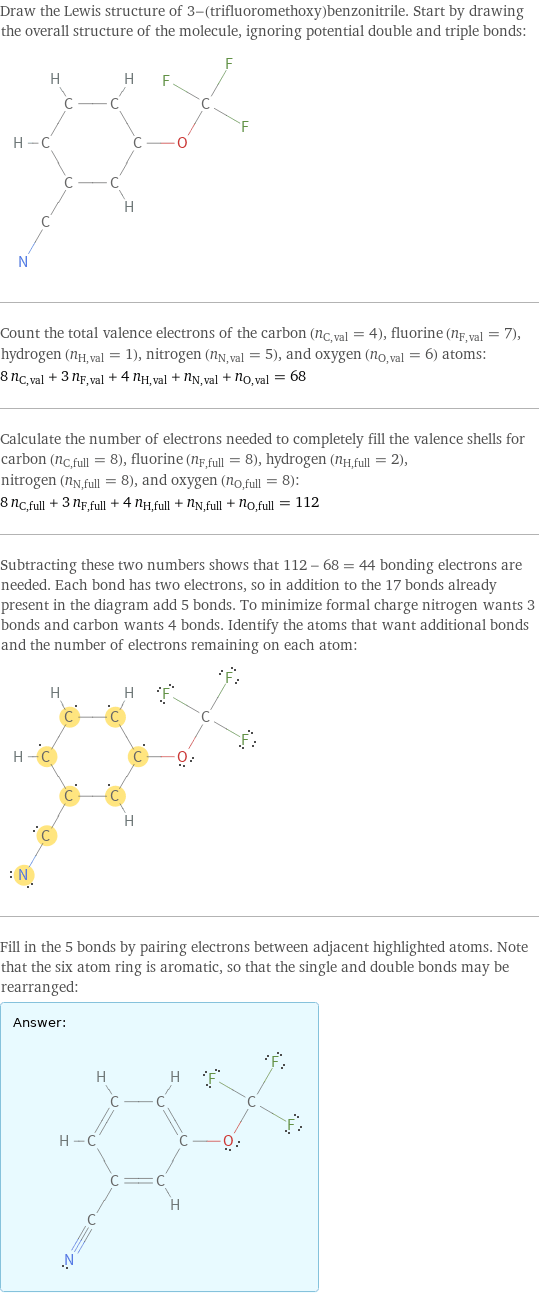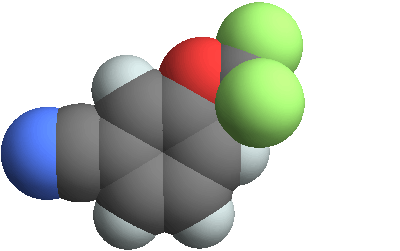Input interpretation

3-(trifluoromethoxy)benzonitrile
Chemical names and formulas

formula | C_8H_4F_3NO name | 3-(trifluoromethoxy)benzonitrile alternate names | 3-trifluoromethoxybenzonitrile mass fractions | C (carbon) 51.4% | F (fluorine) 30.5% | H (hydrogen) 2.15% | N (nitrogen) 7.49% | O (oxygen) 8.55%
Lewis structure

Draw the Lewis structure of 3-(trifluoromethoxy)benzonitrile. Start by drawing the overall structure of the molecule, ignoring potential double and triple bonds: Count the total valence electrons of the carbon (n_C, val = 4), fluorine (n_F, val = 7), hydrogen (n_H, val = 1), nitrogen (n_N, val = 5), and oxygen (n_O, val = 6) atoms: 8 n_C, val + 3 n_F, val + 4 n_H, val + n_N, val + n_O, val = 68 Calculate the number of electrons needed to completely fill the valence shells for carbon (n_C, full = 8), fluorine (n_F, full = 8), hydrogen (n_H, full = 2), nitrogen (n_N, full = 8), and oxygen (n_O, full = 8): 8 n_C, full + 3 n_F, full + 4 n_H, full + n_N, full + n_O, full = 112 Subtracting these two numbers shows that 112 - 68 = 44 bonding electrons are needed. Each bond has two electrons, so in addition to the 17 bonds already present in the diagram add 5 bonds. To minimize formal charge nitrogen wants 3 bonds and carbon wants 4 bonds. Identify the atoms that want additional bonds and the number of electrons remaining on each atom: Fill in the 5 bonds by pairing electrons between adjacent highlighted atoms. Note that the six atom ring is aromatic, so that the single and double bonds may be rearranged: Answer: | |
3D structure

3D structure
Basic properties

molar mass | 187.12 g/mol phase | solid (at STP) melting point | 37 °C boiling point | 236 °C
Units

Solid properties (at STP)

refractive index | 1.45
Thermodynamic properties

critical temperature | 709 K critical pressure | 2.99 MPa (at STP)
Chemical identifiers

CAS number | 52771-22-9 PubChem CID number | 142962 SMILES identifier | C1=CC(=CC(=C1)OC(F)(F)F)C#N InChI identifier | InChI=1/C8H4F3NO/c9-8(10, 11)13-7-3-1-2-6(4-7)5-12/h1-4H